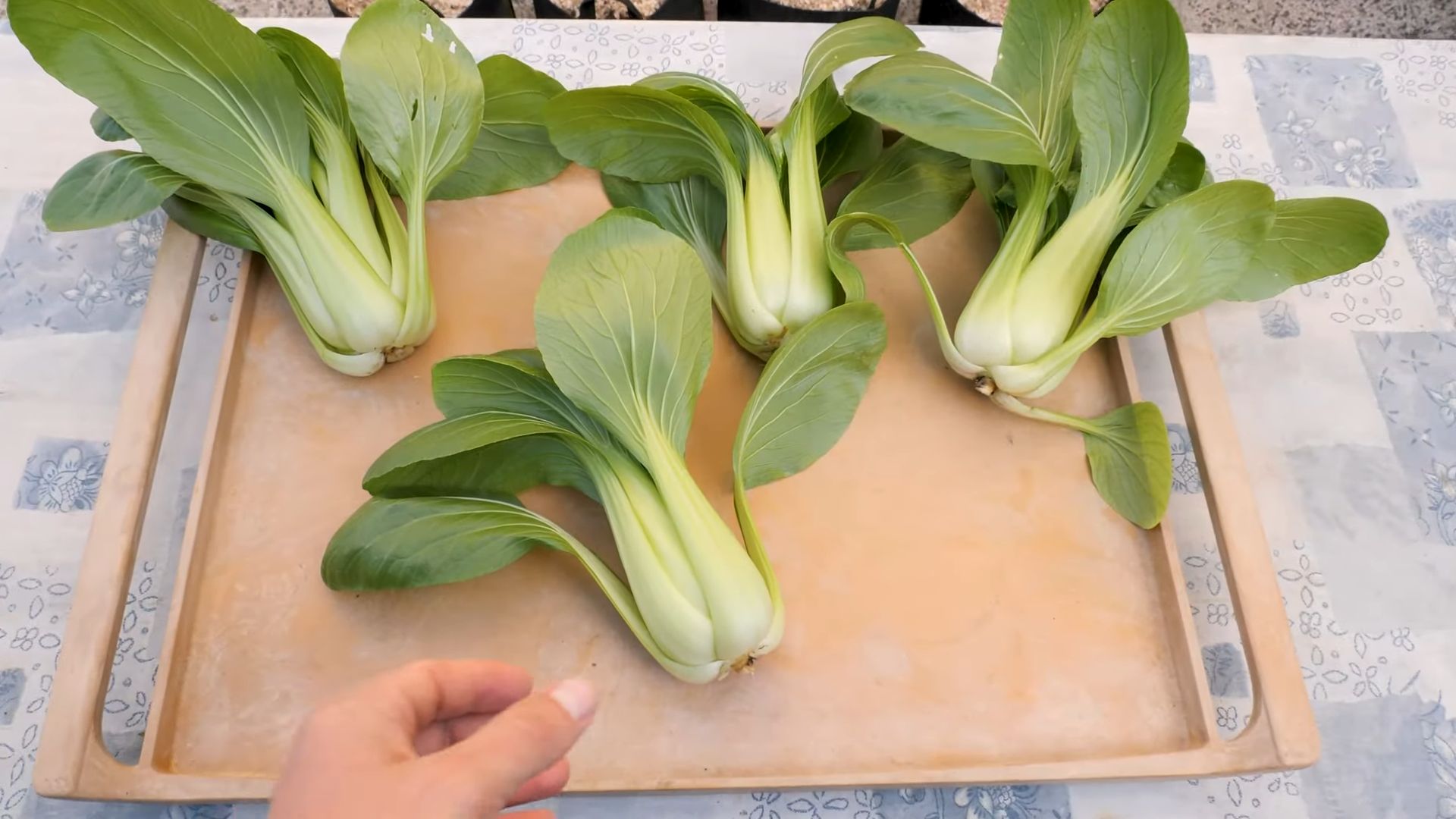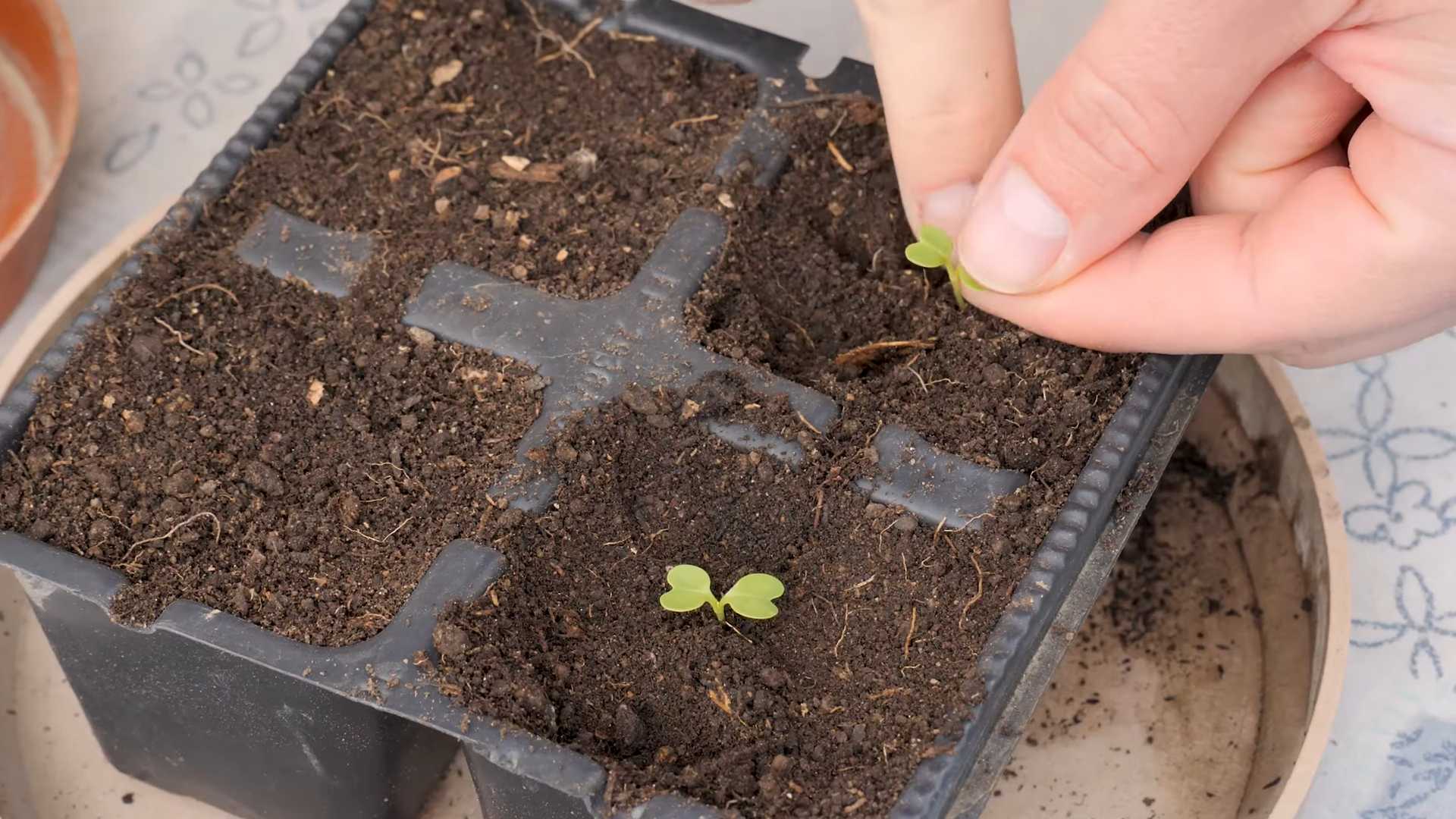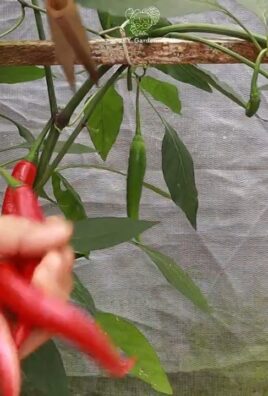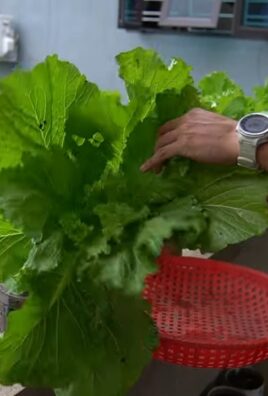Growing Bok Choy at Home can be surprisingly easy and rewarding, even if you don’t have a sprawling garden! Imagine stepping outside your door and harvesting fresh, crisp bok choy for a delicious stir-fry or a vibrant salad. Sounds appealing, right? This DIY guide will unlock the secrets to cultivating this nutritious and versatile vegetable right in your own backyard, balcony, or even windowsill.
Bok choy, also known as pak choi, has a rich history deeply rooted in Chinese cuisine, dating back over 5,000 years. It’s been a staple ingredient in Asian dishes for centuries, celebrated not only for its unique flavor but also for its impressive health benefits. But you don’t need to travel to Asia to enjoy this leafy green!
In today’s fast-paced world, knowing where your food comes from and having control over its quality is more important than ever. Store-bought vegetables can sometimes lack freshness and flavor, and let’s be honest, they can be expensive! That’s where the magic of home gardening comes in. Learning how to grow your own bok choy at home allows you to enjoy fresh, organic produce while saving money and connecting with nature. Plus, it’s incredibly satisfying to nurture a plant from seed to harvest. So, let’s dive into the simple steps and clever tricks that will have you growing bok choy at home like a pro in no time!

Growing Bok Choy at Home: A Beginner’s Guide
Hey there, fellow gardening enthusiasts! Ever thought about growing your own fresh, crisp bok choy right in your backyard (or even on your balcony)? It’s surprisingly easy, and the taste of homegrown bok choy is simply unbeatable. I’m going to walk you through everything you need to know, from seed to harvest, so you can enjoy this delicious and nutritious vegetable whenever you want.
What You’ll Need
Before we dive into the nitty-gritty, let’s gather our supplies. Here’s a checklist to make sure you’re all set:
* **Bok Choy Seeds:** Choose a variety that suits your climate. Some are more heat-tolerant, while others thrive in cooler weather. I personally love the ‘Mei Qing Choi’ variety for its compact size and mild flavor.
* **Seed Starting Trays or Small Pots:** These are perfect for getting your seedlings off to a good start.
* **Seed Starting Mix:** This is a light, sterile soil mix that’s ideal for delicate seedlings.
* **Gardening Gloves:** Protect your hands from dirt and potential irritants.
* **Watering Can or Hose with a Gentle Spray Nozzle:** Gentle watering is key to avoid damaging young plants.
* **Garden Soil or Potting Mix:** For transplanting your seedlings into their final growing location.
* **Fertilizer:** A balanced fertilizer or compost will provide essential nutrients. I prefer using organic options like compost tea or fish emulsion.
* **Shovel or Trowel:** For digging and transplanting.
* **Optional: Row Covers or Insect Netting:** To protect your plants from pests.
* **Optional: Slug and Snail Bait:** If you’ve had problems with these critters in the past.
Starting Your Bok Choy Seeds
This is where the magic begins! You can either direct sow your seeds into the garden or start them indoors for a head start. I usually prefer starting them indoors, especially if I want an early harvest.
Starting Seeds Indoors
1. **Prepare Your Seed Starting Trays:** Fill your seed starting trays or small pots with seed starting mix. Gently pat it down to remove any air pockets.
2. **Sow the Seeds:** Sow 2-3 seeds per cell or pot, about ¼ inch deep.
3. Water Gently: Water the soil thoroughly, but be careful not to overwater. You want the soil to be moist, not soggy.
4. **Provide Warmth and Light:** Place the trays in a warm location (around 65-75°F) and provide plenty of light. A sunny windowsill or a grow light works well.
5. **Keep the Soil Moist:** Check the soil daily and water as needed to keep it consistently moist.
6. **Thin the Seedlings:** Once the seedlings have emerged and have a couple of true leaves (the second set of leaves), thin them to one seedling per cell or pot. Choose the strongest, healthiest-looking seedling.
Direct Sowing Seeds
1. **Prepare the Soil:** Choose a location in your garden that receives at least 4-6 hours of sunlight per day. Bok choy prefers well-drained soil that is rich in organic matter. Amend the soil with compost or other organic matter to improve its fertility and drainage.
2. **Sow the Seeds:** Sow the seeds directly into the soil, about ¼ inch deep and 1-2 inches apart.
3. Water Gently: Water the soil thoroughly, but be careful not to overwater.
4. **Thin the Seedlings:** Once the seedlings have emerged and have a couple of true leaves, thin them to 6-8 inches apart.
Transplanting Your Bok Choy Seedlings
Once your seedlings have developed a few sets of true leaves and are about 3-4 inches tall, they’re ready to be transplanted into their final growing location.
1. **Harden Off the Seedlings:** Before transplanting, you’ll need to harden off the seedlings. This process gradually acclimates them to outdoor conditions. Start by placing the trays outdoors in a sheltered location for a few hours each day, gradually increasing the amount of time they spend outside over the course of a week.
2. **Prepare the Planting Area:** Choose a location in your garden that receives at least 4-6 hours of sunlight per day. Bok choy prefers well-drained soil that is rich in organic matter. Amend the soil with compost or other organic matter to improve its fertility and drainage.
3. **Dig Holes:** Dig holes that are slightly larger than the root balls of your seedlings, spacing them 6-8 inches apart.
4. **Transplant the Seedlings:** Gently remove the seedlings from their trays or pots and place them into the holes. Make sure the top of the root ball is level with the surrounding soil.
5. **Fill the Holes:** Fill the holes with soil and gently pat it down around the seedlings.
6. Water Thoroughly: Water the seedlings thoroughly after transplanting.
Caring for Your Bok Choy Plants
Now that your bok choy plants are in the ground, it’s time to provide them with the care they need to thrive.
* **Watering:** Bok choy needs consistent moisture to grow well. Water regularly, especially during dry periods. Aim to keep the soil consistently moist, but not waterlogged. I usually water deeply a couple of times a week, rather than shallowly every day.
* **Fertilizing:** Bok choy is a heavy feeder, so it benefits from regular fertilization. Apply a balanced fertilizer or compost tea every 2-3 weeks.
* **Weeding:** Keep the area around your bok choy plants free of weeds. Weeds compete with the plants for nutrients and water.
* **Pest Control:** Bok choy can be susceptible to pests such as aphids, cabbage worms, and flea beetles. Inspect your plants regularly for signs of pests and take action if necessary. You can use insecticidal soap, neem oil, or row covers to control pests. I’ve found that companion planting with herbs like dill and rosemary can also help deter pests.
* **Bolting:** Bolting is when the plant prematurely flowers, which can make the leaves bitter. This is often caused by hot weather or stress. To prevent bolting, try to plant your bok choy in a location that receives some afternoon shade, and water regularly to keep the soil moist. Choose bolt-resistant varieties if you live in a warmer climate.
Protecting Your Bok Choy from Pests
Pests can be a real pain, but don’t worry, there are ways to protect your precious bok choy!
* **Row Covers:** These are lightweight fabrics that you can place over your plants to create a barrier against pests.
* **Insect Netting:** Similar to row covers, but with a finer mesh to keep out even smaller insects.
* **Handpicking:** If you only have a few plants, you can simply pick off any pests you see by hand.
* **Insecticidal Soap:** This is a safe and effective way to control aphids, whiteflies, and other soft-bodied insects.
* **Neem Oil:** This is a natural insecticide that can be used to control a wide range of pests.
* **Diatomaceous Earth:** This is a natural powder made from fossilized algae that can be used to control slugs, snails, and other crawling insects. Sprinkle it around the base of your plants.
* **Slug and Snail Bait:** If you have a serious slug or snail problem, you may need to use bait. Choose a bait that is safe for pets and wildlife.
Harvesting Your Bok Choy
The moment you’ve been waiting for! Bok choy is typically ready to harvest in 45-60 days from planting.
1. **Check for Maturity:** The leaves should be firm and crisp, and the heads should be a good size.
2. **Harvest the Entire Head:** You can harvest the entire head of bok choy by cutting it off at the base with a sharp knife.
3. **Harvest Individual Leaves:** Alternatively, you can harvest individual leaves as needed, starting with the outer leaves. This will allow the plant to continue producing new leaves.
4. **Wash and Store:** Wash the bok choy thoroughly and store it in the refrigerator in a plastic bag. It will keep for several days.
Enjoying Your Homegrown Bok Choy
Now comes the best part – enjoying the fruits (or rather, vegetables) of your labor! Bok choy is incredibly versatile and can be used in a variety of dishes.
* **Stir-fries:** Bok choy is a classic ingredient in stir-fries.
* **Soups:** Add bok choy to soups for a boost of nutrients and flavor.
* **Salads:** Young, tender bok choy leaves can be used in salads.
* **Steamed:** Steamed bok choy is a simple and healthy side dish.
* **Grilled:** Grilled bok choy is a delicious and smoky treat.
Troubleshooting
Even with the best care, you might

Conclusion
So, there you have it! Growing your own bok choy at home is not only surprisingly simple, but it’s also incredibly rewarding. Imagine stepping out into your garden or onto your balcony and harvesting fresh, crisp bok choy whenever you need it. No more last-minute trips to the grocery store or settling for wilted, pre-packaged greens. This DIY trick transforms your kitchen into a source of fresh, healthy ingredients.
But why is this a must-try? Beyond the convenience, growing your own bok choy gives you complete control over what goes into your food. You can avoid harmful pesticides and herbicides, ensuring that you’re feeding yourself and your family the cleanest, most nutritious vegetables possible. Plus, there’s something deeply satisfying about nurturing a plant from seed to harvest. It connects you to the natural world and provides a sense of accomplishment that you just can’t get from buying produce at the store.
Looking for variations? Consider experimenting with different varieties of bok choy. Baby bok choy is perfect for quick stir-fries, while larger varieties are great for soups and stews. You can also try growing bok choy in containers of different sizes to see what works best for your space. If you’re feeling adventurous, try companion planting. Marigolds can help deter pests, while herbs like dill and chamomile can attract beneficial insects.
And don’t forget about succession planting! By planting new seeds every few weeks, you can ensure a continuous harvest of fresh bok choy throughout the growing season. This is especially useful if you’re a big fan of Asian cuisine and use bok choy frequently in your cooking.
Ultimately, growing your own bok choy is an investment in your health, your well-being, and your connection to the natural world. It’s a simple, sustainable way to add fresh, nutritious greens to your diet and enjoy the satisfaction of growing your own food. We highly encourage you to give this DIY trick a try. You might be surprised at how easy and rewarding it is.
Once you’ve harvested your first batch of homegrown bok choy, we’d love to hear about your experience! Share your tips, tricks, and photos in the comments below. Let’s build a community of bok choy enthusiasts and inspire others to get their hands dirty and grow their own food. Happy gardening!
Frequently Asked Questions (FAQ)
1. What is the best time of year to plant bok choy?
Bok choy is a cool-season crop, meaning it thrives in cooler temperatures. The best time to plant bok choy is in early spring or late summer/early fall. Avoid planting during the hottest months of summer, as the heat can cause the plants to bolt (go to seed prematurely). In spring, plant after the last frost. For a fall harvest, plant about 4-6 weeks before the first expected frost. If you live in a region with mild winters, you may even be able to grow bok choy throughout the winter months.
2. What kind of soil does bok choy need?
Bok choy prefers well-drained, fertile soil that is rich in organic matter. Amend your soil with compost or well-rotted manure before planting to improve its fertility and drainage. The ideal soil pH for bok choy is between 6.0 and 7.5. You can test your soil pH using a soil testing kit, which can be found at most garden centers. If your soil is too acidic, you can add lime to raise the pH. If it’s too alkaline, you can add sulfur to lower the pH.
3. How much sunlight does bok choy need?
Bok choy needs at least 4-6 hours of sunlight per day. However, it can tolerate partial shade, especially during the hottest part of the day. If you live in a region with very hot summers, providing some afternoon shade can help prevent the plants from bolting. When growing bok choy indoors, place it near a sunny window or under grow lights.
4. How often should I water bok choy?
Bok choy needs consistent moisture to thrive. Water deeply whenever the top inch of soil feels dry to the touch. Avoid overwatering, as this can lead to root rot. Mulching around the plants can help retain moisture in the soil and suppress weeds. During hot, dry weather, you may need to water more frequently.
5. What are some common pests and diseases that affect bok choy?
Some common pests that affect bok choy include aphids, cabbage worms, flea beetles, and slugs. You can control these pests by handpicking them off the plants, using insecticidal soap, or applying Bacillus thuringiensis (Bt) for cabbage worms. Common diseases that affect bok choy include downy mildew, clubroot, and black rot. To prevent these diseases, choose disease-resistant varieties, practice crop rotation, and avoid overhead watering.
6. How do I harvest bok choy?
You can harvest bok choy when the leaves are young and tender, or you can wait until the plant has reached its full size. To harvest, simply cut the entire plant at the base with a sharp knife. You can also harvest individual leaves as needed, starting with the outer leaves. If you harvest individual leaves, the plant will continue to produce new leaves.
7. Can I grow bok choy in containers?
Yes, bok choy grows well in containers. Choose a container that is at least 6 inches deep and has drainage holes. Fill the container with a well-draining potting mix. Plant the bok choy seeds or seedlings according to the instructions on the seed packet or plant label. Water regularly and fertilize every few weeks with a balanced fertilizer.
8. How long does it take for bok choy to mature?
Bok choy typically matures in 45-50 days from seed. Baby bok choy can be harvested in as little as 30 days. The exact time to maturity will depend on the variety of bok choy, the growing conditions, and the time of year.
9. Can I save seeds from my bok choy plants?
Yes, you can save seeds from your bok choy plants, but it requires allowing the plant to bolt (go to seed). This is more likely to happen in the second year of growth. Bok choy is a biennial plant, meaning it completes its life cycle in two years. Allow the seed pods to dry on the plant before harvesting them. Store the seeds in a cool, dry place. Be aware that bok choy can cross-pollinate with other members of the Brassica family, so the seeds may not produce plants that are true to type.
10. What are some ways to use bok choy in cooking?
Bok choy is a versatile vegetable that can be used in a variety of dishes. It can be stir-fried, steamed, boiled, or added to soups and stews. It’s also delicious raw in salads. Bok choy pairs well with garlic, ginger, soy sauce, sesame oil, and other Asian flavors. Try adding it to your next stir-fry, soup, or salad for a healthy and delicious boost.




Leave a Comment